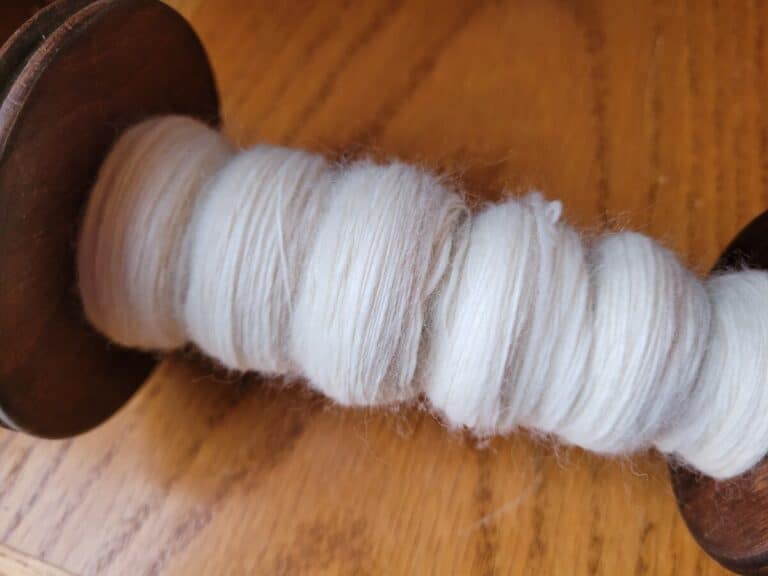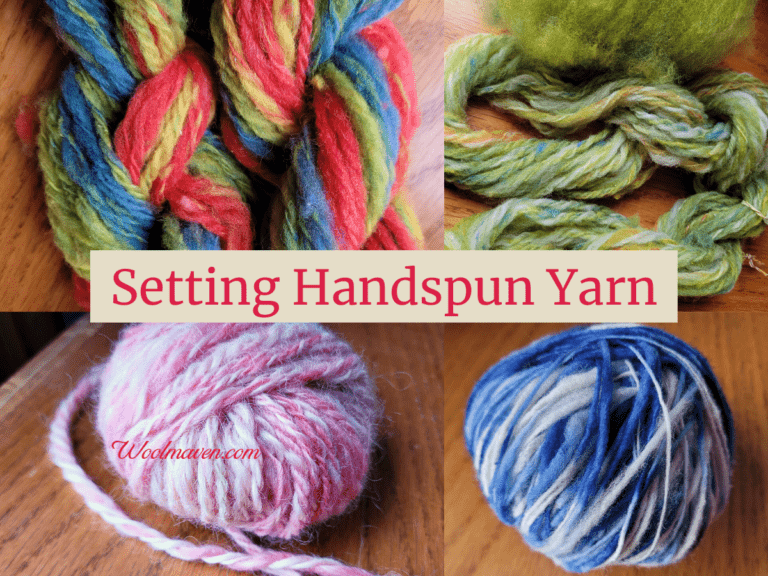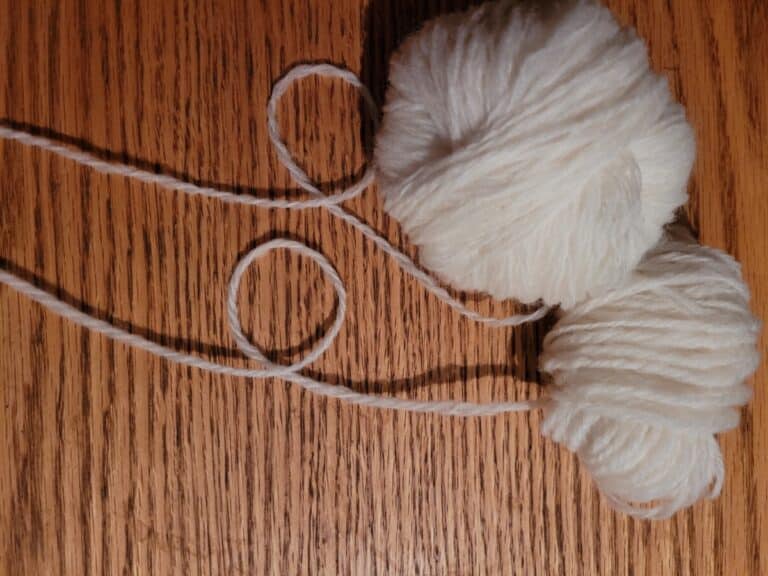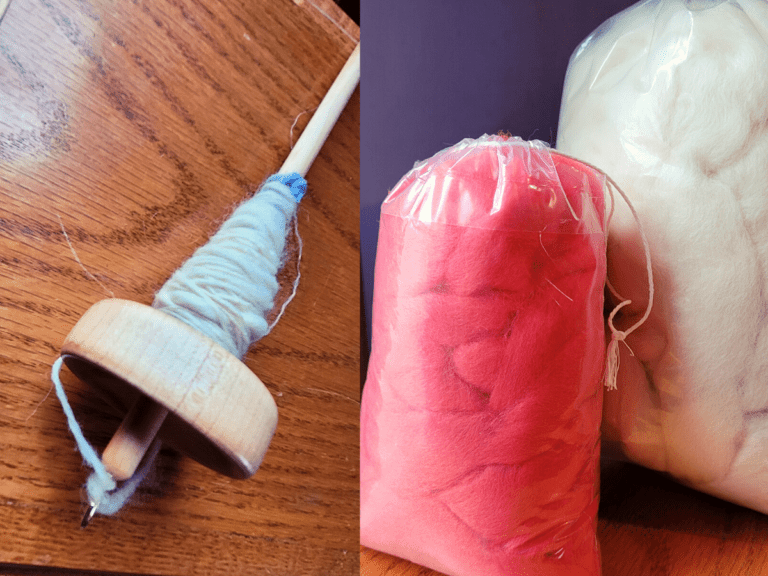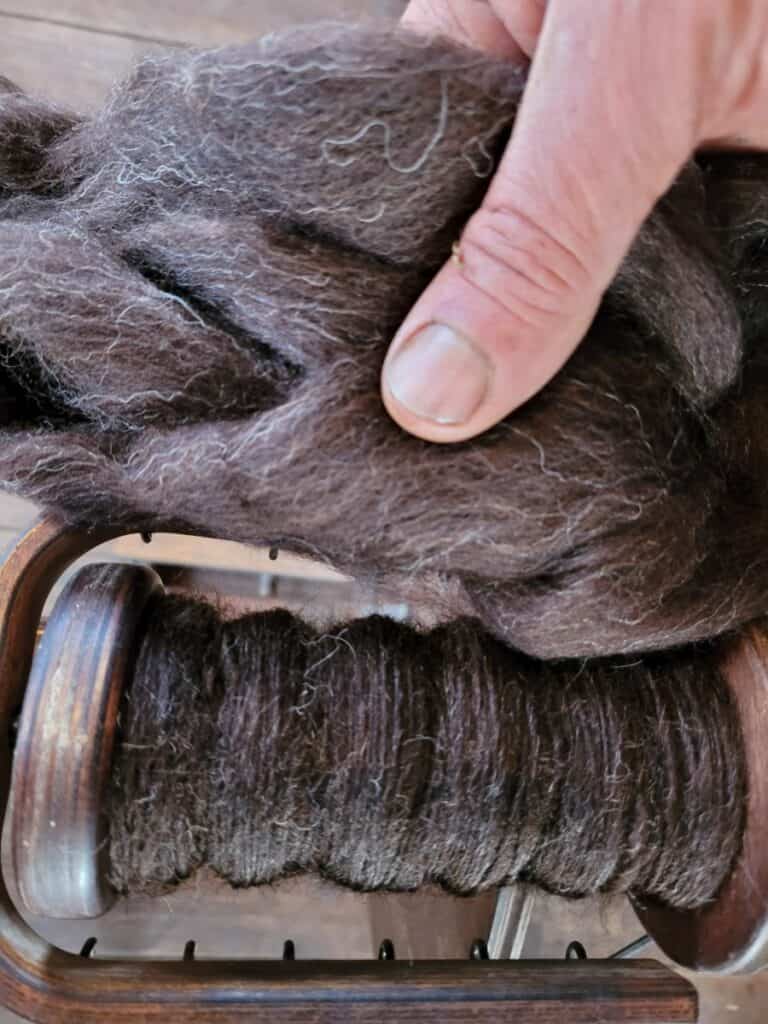Is Angora Hard To Spin?
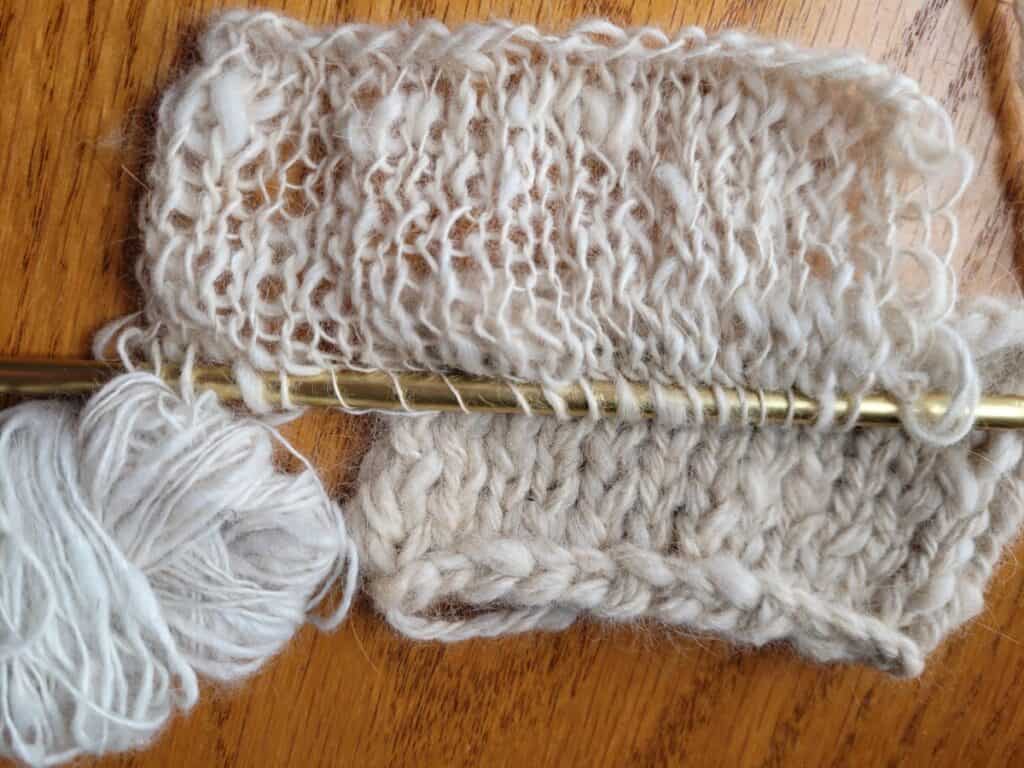
Thinking about trying to spin some angora? Maybe you’ve heard that angora is hard to spin and are wondering if you can even use it!
Let’s look into spinning angora and get you started in the right direction!
Angora wool is not hard to spin, but it does take some practice to get the feel for spinning it.
Pros And Cons Of Handspinning Angora goes more into the great and not so great points of working with the angora fiber itself.
Angora is not hard to spin
Believe it or not, angora is not all that hard to spin!
However, it is more slippery than many wools, due to lack of crimp, so it takes a bit of getting used to in order to get your yarn to hold together.
Spinning angora can be fairly easy when you keep a few things in mind as you are preparing your fiber and while you are spinning.
The two main points to spinning angora are using well prepared fiber and spinning with a lot of twist.
Start with well prepared angora fiber
Start with well prepared angora fiber, which means buy roving (not just harvested fiber) or make your own by carding the angora into a batt and splitting the batt into columns.
The reason to start with roving is that you want to have minimal joining of more fiber as you spin.
It is easier to work with one section that is longer, more like 8 inches or so, rather than the 2-3 inch staple length of the angora fiber.
Once you get better at spinning angora, you can spin directly from the harvested fiber or even directly from the rabbit, but, for now it will be easier to work with a roving.
Which Angora Is Best To Spin? goes over your choices, regarding breed and tips on what to look for when selecting the fiber you plan to buy to spin.
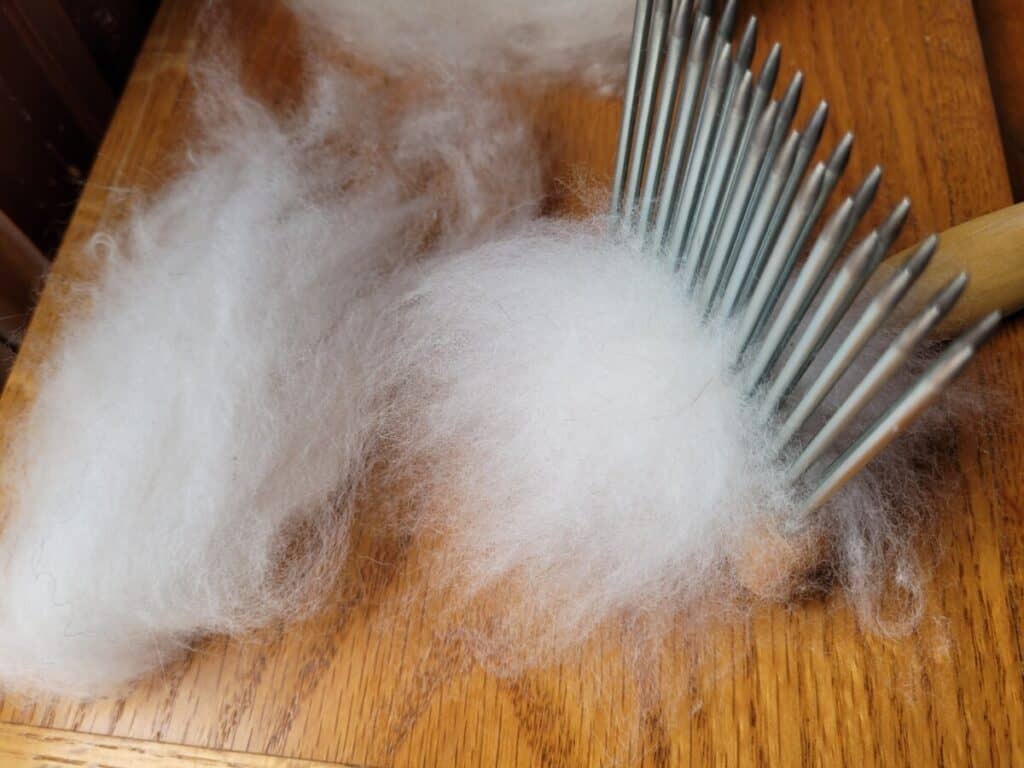
You can comb or card angora
To get your angora wool ready to spin, you can comb it or card it.
Combing will give you a smoother fiber preparation and remove more of the bits of debris and nepps than carding.
As long as the angora you are working with is of a decent length, you can comb it. Shorter lengths will have to be carded.
Carding angora is a more common preparation method. You can use hand carders or a drum carder.
I find that for really nice angora, longer fibers that are free of VM (vegetable matter) that the hand carders work just fine.
If the angora is more jumbled up or has matts, nepps or VM, then the hand carders are not as easy to use as a drum carder.
Keep in mind that whatever you put through the drum carder will end up in the batt, so if you don’t want the VM or nepps, pick them out before carding, as well as when you card.
The more you card or comb angora, the more likely you are to build up static, which makes the fibers difficult to deal with.
I find that the drum carder builds less static than the hand carders and the combs are fine for the first pass or two, then you’ll start to see the static.
Plan to spin with higher than normal twist
The second key to spinning angora is to use higher than normal twist, basically plan on over spinning your yarn!
Since angora is a slippery fiber, you need to use a lot of twist to hold it together.
Ironically, over spinning is probably something you have been working to correct up until now. Resurrect your old over spinning self and use those skills here!
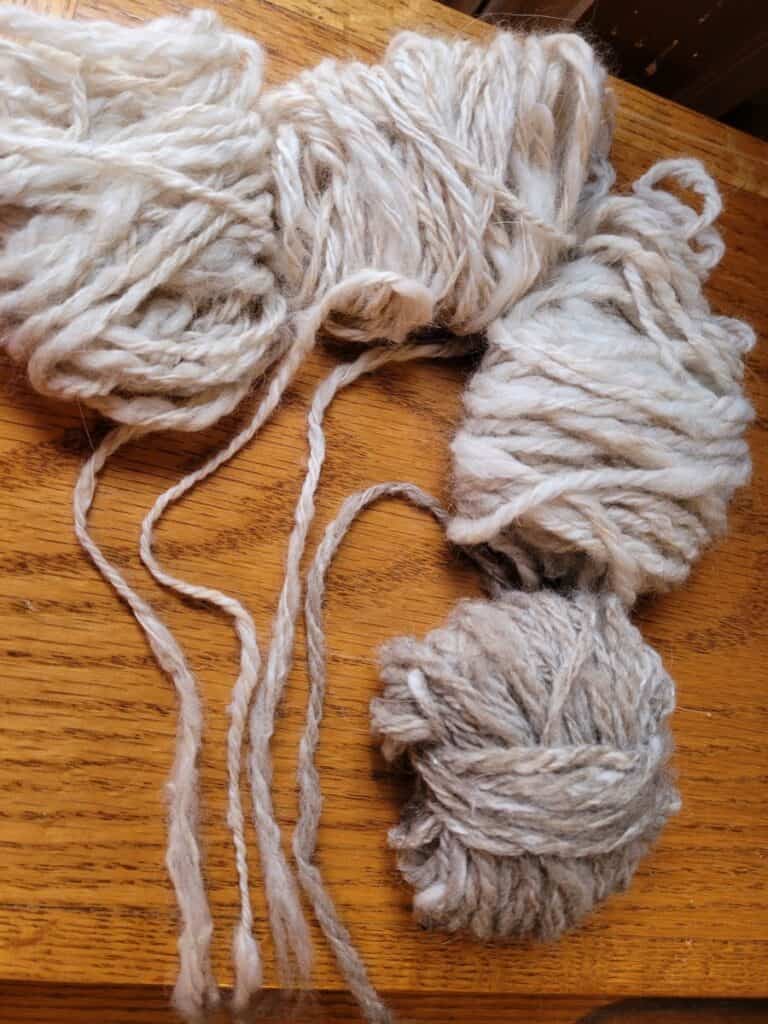
The bottom right is mostly wool with just a touch of angora in it, to test the idea, the upper right is 50/50, the upper middle is 75/25 and the upper left is 100% angora.
Angora blending options
If you are having a hard time making the angora yarn hold together, consider blending it with wool and working your way to a 100% angora yarn.
I decided to work my way up to 100% angora by starting with a little bit of angora in some wool, to see if the drum carder could handle it.
I carded the batt, spun and set it, then knitted it up to see how I liked it and how it performed for me.
After each carding, I spun and knit what I had just made before carding another blend.
For the second blend, I went 50/50, done by weight of the pre carded fiber, using a combination of Polwarth and Merino combed tops and angora.
Any of the finer wools would have worked well here. I used what I had on hand that would keep the yarn soft.
Next, I went to 25% wool and 75% angora, done by weight again, then 100% angora.
This kind of step down method seemed to work well for me and made spinning the angora pretty easy.
Crazy enough, I actually like the 50% angora the best, as far as easy to work with and the difference between the 75% and 100% angora is hard to feel.
You can tell from how the yarn performs, the 75% has some elasticity that the 100% does not, but from looks and touch, it’s not much difference at all.
I was not expecting that. I figured that each decrease in wool would make a marked increase in softness, but only to a point.
At the 75% mark, the only real difference to me is that this blend has some workability still build in, while the 100% angora has zero give.
Try blending to differing degrees yourself and see what percent angora you like the best, not only is it fun to make the blends, it’s also interesting to see what your preferences really are.
Of course, you can spin 100% angora, if that is what you like!
My experience with angora wool
I used to have a terrible time spinning my angora, so much so that I just kept the fiber in a chest and didn’t try to spin it any more because I was just making a mess of it!
Truly sad, since it is such a wonderful fiber and so, so soft! Any time I tried to spin it, it was disasterville! I put the angora aside and worked with other fibers instead.
I recently purchased a drum carder and thought I’d give the angora a try on that, what did I have to lose?
It turns out that the drum carder is the key!
Drum carding the angora made a world of difference to me and helped me go from “look at all this angora, too bad I can’t spin it!” to actually spinning angora!
The preparation of the angora truly makes that big of a difference!
It sounds like I’m trying to sell you a drum carder, I’m not (but they are really great!). I’m more trying to sell you on you!
Stop holding yourself back when the easy fix here is to get some angora that is easy to use!
I have had a set of hand carders for quite a while now and, of course, tried to use those with the angora.
Technically, it worked, but it is static city, making the hand carded angora hard for me to work with.
If you are hand carding your angora, stop and get some roving to work with first or take some of your angora to a friend with a drum carder and make a batt.
Once you can work with the well prepared fiber, then move to using your home prepared angora.
The Joy Of Handspinning has an overview type article on angora fiber going over fiber preparation as well as uses.


